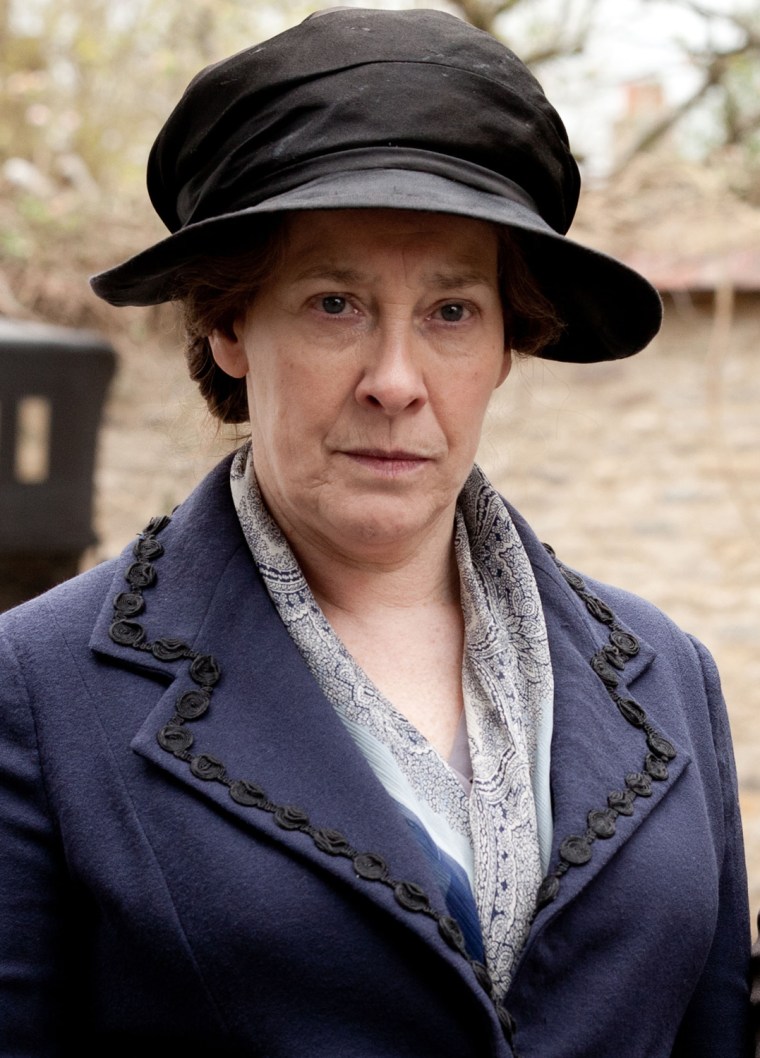Editor's note: Some minor spoilers follow.
First, the war, then the Spanish flu -- and now breast cancer may have come to Downton Abbey.
In Sunday's highly anticipated third season premiere in the U.S., a major, older female character found a lump in one of her breasts and consulted with the family's doctor the next day (the same doctor, incidentally, who handled the 1918 Spanish flu epidemic that hit the family and its servants).
The doctor biopsied the lump, but the preliminary results were inconclusive. The unfortunate patient, Mrs. Hughes, the kind housekeeper of the estate, was told she’d have to wait an agonizing two months to find out her fate.
Breast cancer is a frightening diagnosis for any woman. Now the 5-year survival rate can range from 15 percent to 93 percent, depending on what stage the disease is diagnosed. But in 1920, the prospects for someone like Mrs. Hughes -- who looked visibly tired and drawn in the premiere episode -- were grim.
"Most cancers were a death sentence then just because of the fact they were diagnosed so late," says practicing at the Center for Breast Care in Burbank, Calif. "Most of the time, patients had metastatic disease. They had very advanced disease in the lymph nodes and a lot of time there was quite a lot of pain associated with the progression of the disease.
In 1920 many women often didn’t discover a lump until the disease was more advanced than today. Because of self-exams and screening, modern women usually find a lump when it's the size of a pea or marble. Back then, the cancer would likely be more advanced and the tumor might be the size of a golf ball or an egg.
"During that time, "when women felt a lump -- if they even checked at all -- it was generally very large, oftentimes eroding through the skin, and oftentimes associated with large masses under the arms or above the collarbone, the spread of the cancer to the lymph nodes," says says Attai. "Or if the cancer was close to the surface, it would start growing through the skin, causing an ulcer."
At Mrs. Hughes’ examination, the doctor drew fluid from the lump, telling her that if the fluid wasn't clear -- indicating a harmless cyst -- she would need more testing. As it turned out, the fluid contained blood, which meant sending it out for analysis, a two-month long process at that time.

There was no standard chemotherapy treatment and radiation therapy was in its infancy. Surgical techniques were “fairly crude,” says Attai.
Breast cancer treatment primarily consisted of an operation that came to be known as the Halsted radical mastectomy, named for the American surgeon who performed it in the U.S. for the first time. In addition to the breast and the tumor(s), a surgeon would also remove the underlying chest muscle (including pectoralis major and pectoralis minor) and the lymph nodes under the arm. This aggressive surgery often resulted in a high incidence of overall morbidity, lymphedema, and even arm paralysis.
"Halsted died in 1922 but his radical mastectomy persisted through the 1960s and even until the 1970s," says Attai, adding that the surgery was finally phased out after the trials found that there was no difference in survival rates between women who'd received a radical mastectomy and women who'd received a modified version of the radical.
Related: